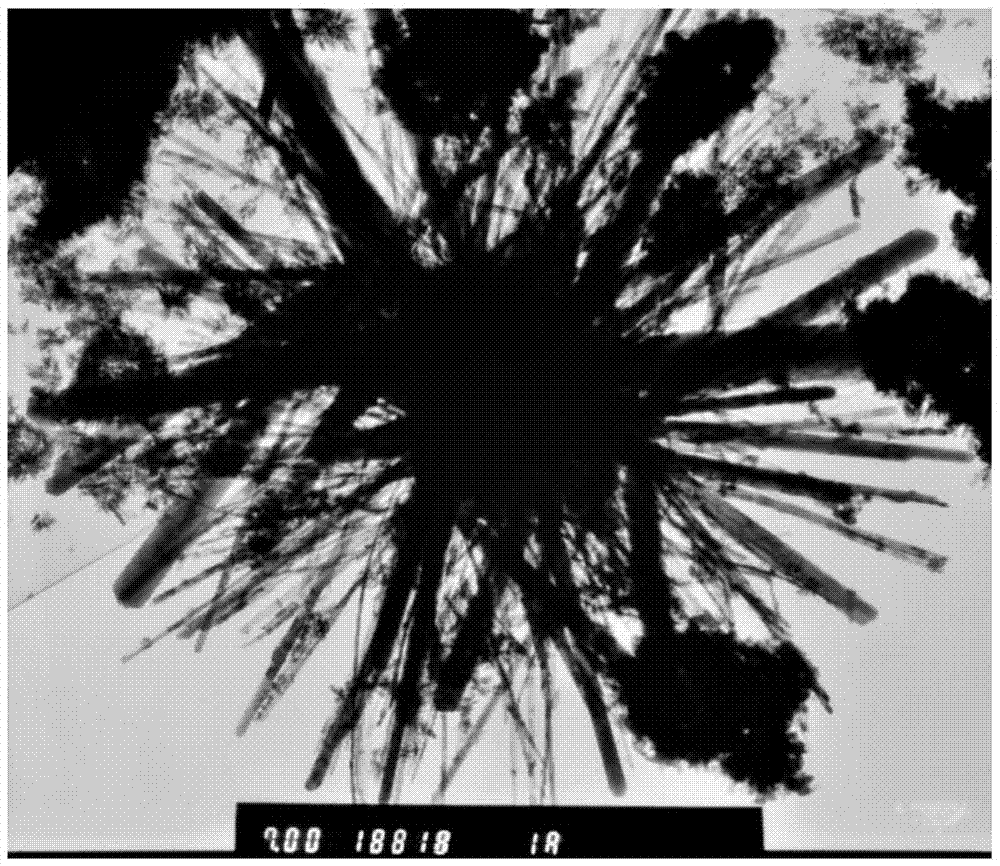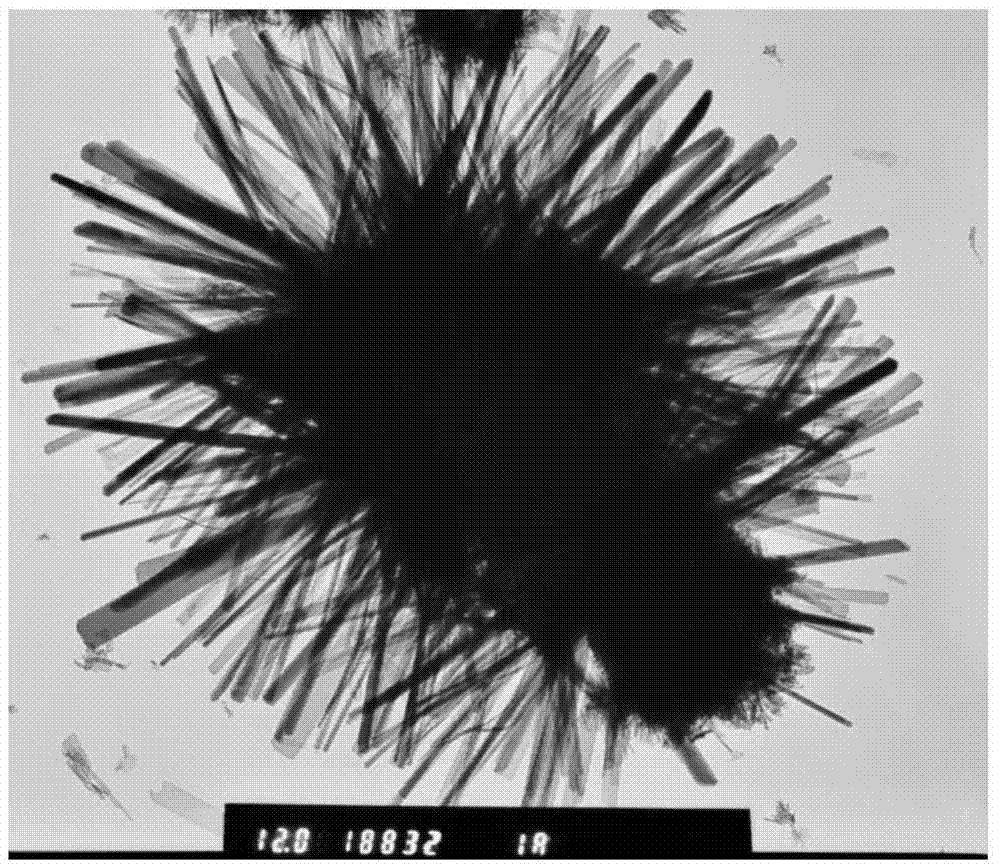Nano-rod-like structure hydroxyapatite and preparation method thereof
A hydroxyapatite and nanorod-like technology, applied in nanotechnology, nanotechnology, chemical instruments and methods, etc., can solve the problems of easy crystallization and growth, unable to form nanostructured materials, etc., and achieve good biodegradation performance and morphology. And the effect of controllable size and convenient operation
- Summary
- Abstract
- Description
- Claims
- Application Information
AI Technical Summary
Problems solved by technology
Method used
Image
Examples
Embodiment 1
[0024] At room temperature, 0.3 g creatine phosphate (C 4 h 8 N 3 o 5 PNa 2 4H 2 O) be dissolved in the deionized water of 40 milliliters of room temperature and form A liquid, 0.4g calcium lactate (CH 3 CHOHCOO 2 Ca·5H 2 O) Dissolve in 20 ml of deionized water at 60°C to form solution B. Take liquid A and liquid B and mix them, and after magnetically stirring for 20 minutes, transfer the clear mixed solution into a reaction kettle (capacity: 60 ml), and react at 180° C. for 6 hours. After the reaction system was naturally cooled to room temperature, the product was taken out and centrifuged. The separated product was washed three times with deionized water, once with absolute ethanol, and dried in air at 60°C to obtain the following: figure 1 The hydroxyapatite material shown. The material is assembled from nanorods.
Embodiment 2
[0026] At room temperature, 0.3 g creatine phosphate (C 4 h 8 N 3 o 5 PNa 2 4H 2 O) be dissolved in the deionized water of 40 milliliters of room temperature and form A liquid, 0.4g calcium lactate (CH 3 CHOHCOO 2 Ca·5H 2 O) Dissolve in 20 ml of deionized water at 60°C to form solution B. Take liquid A and liquid B and mix them, and after magnetically stirring for 20 minutes, transfer the clear mixed solution into a reaction kettle (capacity: 60 ml), and react at 120° C. for 4 hours. After the reaction system was naturally cooled to room temperature, the product was taken out and centrifuged. The separated product was washed three times with deionized water, once with absolute ethanol, and dried in air at 60°C to obtain the following: figure 2 The hydroxyapatite material shown. The material is assembled from nanorods.
PUM
 Login to View More
Login to View More Abstract
Description
Claims
Application Information
 Login to View More
Login to View More - R&D
- Intellectual Property
- Life Sciences
- Materials
- Tech Scout
- Unparalleled Data Quality
- Higher Quality Content
- 60% Fewer Hallucinations
Browse by: Latest US Patents, China's latest patents, Technical Efficacy Thesaurus, Application Domain, Technology Topic, Popular Technical Reports.
© 2025 PatSnap. All rights reserved.Legal|Privacy policy|Modern Slavery Act Transparency Statement|Sitemap|About US| Contact US: help@patsnap.com


